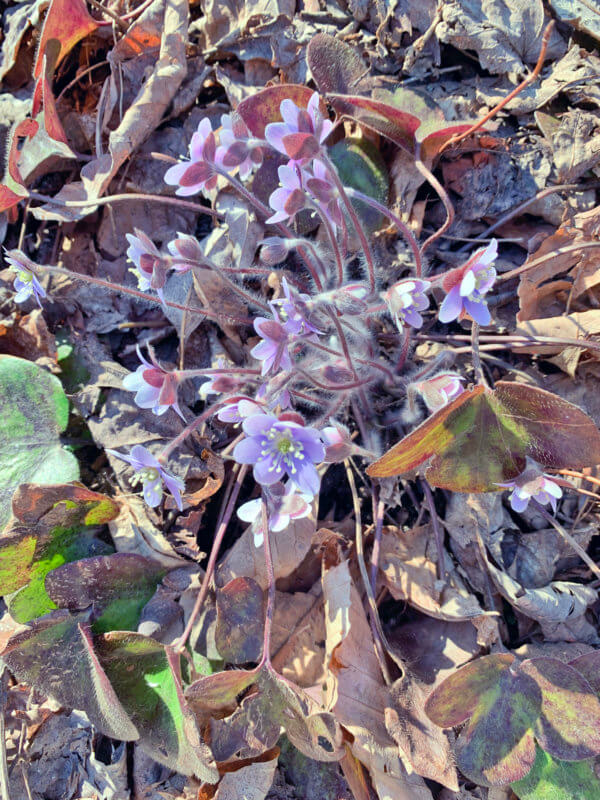Ants gardeners of many early spring wildflowers
As we delight in energy from the warming sun, so too do ephemeral wildflowers, taking advantage of sunlight before trees in the canopy leaf out. These perennial woodland plants emerge early in spring, bloom quickly and set seed. Once the forest floor is deep in shade, the leaves wither away, leaving just the roots, rhizomes and bulbs underground.
Fun fact: Many of these plants rely on myrmecochory — seed dispersal by ants. The seeds of spring ephemerals bear fatty external appendages called elaisomes. Ants harvest and carry them to their nests, eating this rich outer layer and leaving the naked seeds buried in in the soil to germinate.

On each warm day I spot yet another species of spring wildflowers. As of deadline, I’ve spotted hepatica — Thompson’s Point and Mt. Philo, Dutchman’s breeches — Philo, and ready-to-pop buds of blood root, spring beauties and early meadow rue, also on Mt. Philo.
Trout lily leaves poke through leaf litter. Can flowers be far behind?
Many trails are wet and easily damaged at this time of year. Consider local road walks with good wildflower displays. Both Thompson’s Point and Leavingsworth Road, off Carpenter and O’Neil Roads just across the town line into Hinesburg, are worth the journey.
Plant identification apps
If you have ever used your cell phone to identify a plant, you may find this academic study from Michigan State University of interest. Students in a weed science class were required to photograph ten plants and submit the photos to each of 14 apps to test their accuracy. The 2021 winner was PictureThis with 67 percent accuracy. PictureThis is not a free app, however. After a trial period it costs $1.99 per month or $19.99 per year.
The next grouping, at about 50 percent accuracy, includes PlantNet, which is free but many reviewers find clunky; Plant Story, which ranges in cost depending on user choices; and LeafSnap, free on iOS like Apple iPhones and iPads but not iMacs.
A 2020 runner-up, iNaturalist slumped to only 30 percent accuracy in the 2021 test. iNaturalist is always free and has no ads, but the survey organizers noted, “With iNaturalist, it appears to be more critical to read the instructions and get to know the app before you use it.” That’s good advice in life, I’d say.
I always try free first. If it’s cumbersome, frustrating, or fails to identify my quarry, then it may be time to pay. As I pursue spring wildflowers, I’ll test two free apps, LeafSnap and iNaturalist, with flowers I already know and then pursue some new ones.
Spring peepers
If spring peepers aren’t singing within earshot, you don’t have to travel far to hear them. These tiny frogs can peep up to 4,000 times per hour and each frog sings for several hours each night. Our neighborhood peepers joined the chorus one week later than usual this year, even as dates trend earlier with our warming climate.
Male peepers produce the cacophony. From the Vermont Center for Ecostudies we learn, “Each peep is made when a frog forces air from its lungs, over the vocal cords in its larynx, and into an air sac in its throat. The air enters the sac from openings on each side of the mouth cavity, causing the sac to balloon outward. The inflated sac acts as a sounding board, amplifying the sound and carrying it from the frog to our ears.”
It is not surprising that male peeper trunk muscles, which pump air from the lungs, average 15 percent of their body mass compared to only three percent for the quiet females. The aerobic capacity of their trunk muscle is six times that of leg muscles and, in males, is 17 times greater than that of female trunk muscle. These little guys have big bellows.
May “Outdoors” will feature Charlotte’s “Man of the Mountain,” Pete Hiser, who has led the three-year, trail-building project on Mt. Philo.
Until then, enjoy spring in the outdoors.

